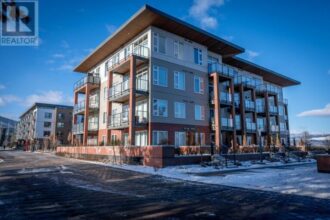In the shadow of Vancouver Island’s coastal mountains, a new demographic shift is quietly taking place. American healthcare professionals—particularly nurses—are increasingly choosing Nanaimo, British Columbia as their new home, trading the complexities of the US healthcare system for Canada’s universal model.
Rachel Henderson, a veteran intensive care nurse with 17 years of experience in Seattle, represents this growing trend. “The burnout was becoming unbearable,” Henderson explains during our interview at a waterfront café in downtown Nanaimo. “I was handling more patients than was safe, working mandatory overtime weekly, and watching patients struggle with medical bills even with insurance. Something had to change.”
Henderson is part of a wave of American healthcare workers looking northward, drawn by multiple factors that extend beyond just the healthcare system. Canada News reports indicate that applications from US healthcare professionals for Canadian work permits increased by 31% over the past two years, with British Columbia seeing the largest share of these applications.
“The salary adjustment was initially concerning,” Henderson admits. “I took about a 12% pay cut on paper, but when I factor in the significantly lower healthcare premiums, better retirement benefits, and more reasonable housing costs in Nanaimo compared to Seattle, I’m actually coming out ahead financially.”
The Nanaimo Regional General Hospital has actively recruited American nurses, recognizing their advanced training and experience as valuable assets during Canada’s own nursing shortage. Hospital administrator David Chen notes, “American nurses bring specialized skills and adapt quickly to our system. Their training is excellent, and after a brief orientation to our protocols, they integrate seamlessly.”
For many American nurses, the appeal extends beyond financial considerations. The work-life balance represents a fundamental shift in their professional experience. Henderson describes her new reality: “I work my scheduled shifts—no more, no less. I’m not constantly called in on my days off. I can actually plan my life now.”
Nanaimo itself has become a draw for these healthcare transplants. With a population of approximately 100,000, the city offers an attractive combination of affordability and amenities that larger Canadian centers cannot match. The average home price in Nanaimo, while rising, remains significantly below Vancouver or Victoria levels, making homeownership realistic for middle-income professionals.
“I can walk to the beach after work,” Henderson says. “My commute is 12 minutes. My kids are in excellent schools. The community has been incredibly welcoming.”
The transition isn’t without challenges. CO24 News investigations have found that navigating immigration procedures remains complex despite nursing being on Canada’s skilled worker priority list. Licensing requirements vary by province, requiring additional examinations and verification processes that can take 6-12 months to complete.
Cultural adjustments also present hurdles. “The pace is different here,” explains Michael Torres, an emergency department nurse who relocated from Phoenix two years ago. “American healthcare operates at this frantic, constantly accelerating rhythm. Learning to work within a system that prioritizes thoroughness over speed took adaptation.”
Healthcare economists suggest this migration trend may accelerate. Dr. Amara Singh, healthcare policy analyst at the University of British Columbia, observes: “The pandemic exposed structural weaknesses in both countries’ healthcare systems, but the American nurses we’ve interviewed consistently cite systemic issues—corporate influence, insurance barriers to patient care, and deteriorating working conditions—as their primary motivations for relocation.”
The financial implications for the US healthcare system are concerning. Training a specialized nurse costs approximately $70,000-$100,000, representing a significant knowledge investment now benefiting Canada’s healthcare system. Some US hospitals in border states have responded with retention bonuses and improved working conditions, but many struggle to compete with the comprehensive benefits and work environment that Canada offers.
For communities like Nanaimo, the influx represents both opportunity and challenge. Housing availability has tightened, though not dramatically. Local officials have begun discussing infrastructure planning to accommodate the growing healthcare workforce.
As Henderson watches the sunset over Departure Bay, she reflects on her decision: “I still care deeply about my patients and the work. That hasn’t changed. What’s changed is that I no longer feel like I’m sacrificing my wellbeing to provide care. Isn’t that what healthcare should be about—healing without harming the healers?“
As healthcare systems on both sides of the border face unprecedented challenges, one must wonder: does this migration of medical talent represent a temporary adjustment or a fundamental shift in how healthcare professionals evaluate their career options and quality of life?











